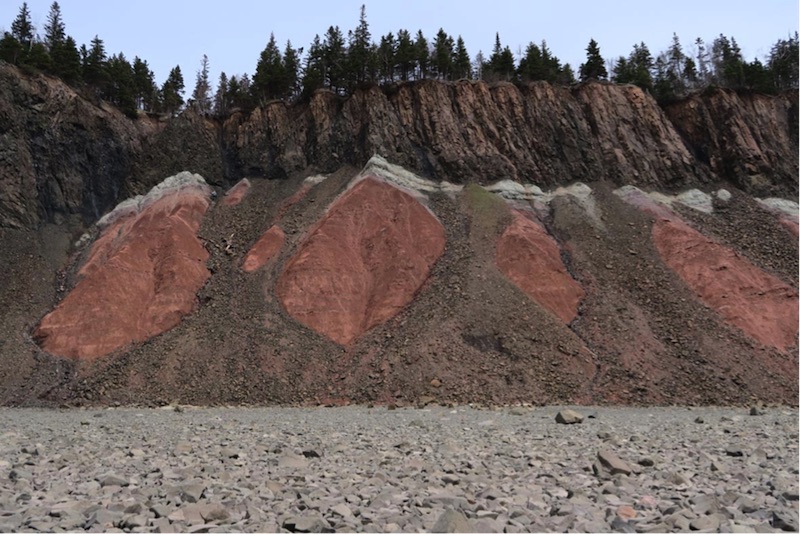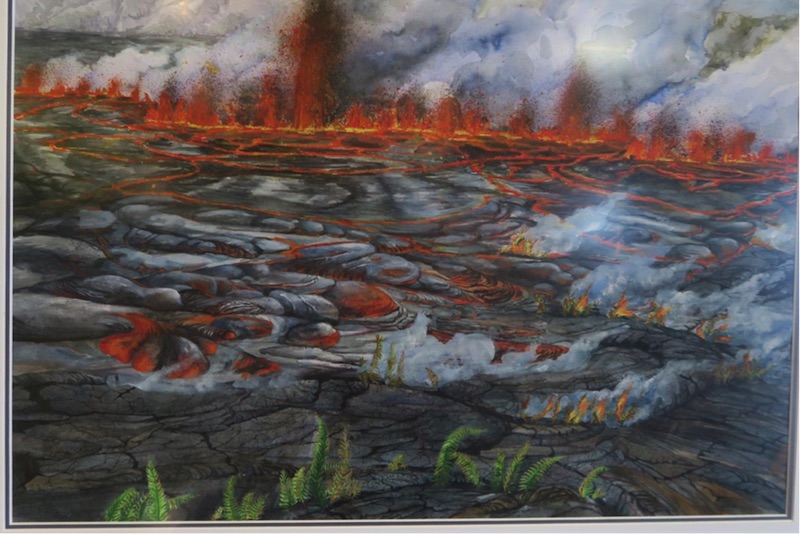Timescales for the formation of Large Igneous Provinces and their intercalibration with periods of mass extinction

Basal contact of CAMP basalts to underlying Triassic sediments (Five Island Provincial Park, Nova Scotia)
Dramatic environmental perturbation, climate overturn and mass extinctions in the geological past are considered to be caused by massive volcanic activity in Large Igneous Provinces (LIPS). We have previously demonstrated that in selected cases, catastrophic biotic change and dynamics and tempo of biotic post-extinction recovery can be dated at better than 100 ka uncertainty of the 206Pb/238U zircon date, e.g., in the Mesozoic. It is of primordial importance that the volcanic activity of LIPS associated with these biotic crises is dated at identical levels of precision and accuracy, in order to infer a causal relationship. We have applied high-precision U-Pb dating of micro-zircon (ZrSiO4) and micro-baddeleyite (ZrO2) to volcanic rocks from Central Atlantic Magmatic Province (CAMP) and from the Karoo province in Lesotho/South Africa through dating of sills, dykes and basaltic lavas (Sell et al., 2014; ongoing work, watch out for papers of Greber et al., Davies et al. to come soon).
We intend to correlate these high-precision dates with magneto- and cyclostratigraphic timescales, as well as with the marine environmental and biotic evolution recorded in marine sedimentary sequences. These data may discriminate between models of extinction at the onset of volcanism versus maximum environmental stress and extinction during the peak volumetric volcanic activity through the evidence of contemporaneity at the 50’000 years’ level of temporal resolution.
For the end-Triassic marine extinction, we could provide evidence that the first intrusive pulses of the CAMP (sills and dykes in S. America, Africa and Europe) were older that the mass extinction event (Davies et al., 2017, Nature Communications). We interpret this result in the frame of the hypothesis outlined in Guex et al. (2016) as indication that the first arrival of massive volumes of volatiles through shallow intrusion of dykes was the trigger for mass extinction.

Wonderful painting in the Fundy Geological Museum, Parrsboro (Nova Scotia)
Davies J.H.F.L., Marzoli A., Bertrand A., Youbi H., Ernesto N. & Schaltegger U. (2017) End-Triassic mass extinction started by intrusive CAMP activity. Nature Communications 8, 15596, doi:10.1038/ncomms15596
Guex J., Pilet S., Müntener O., Bartolini A., Spangenberg J., Schoene B. & Schaltegger U. (2016) Thermal erosion of cratonic lithosphere as a potential trigger for mass extinction. Sci. Rep., DOI: 10.1038/srep23168
Sell B., Ovtcharova M., Guex J., Jourdan F., Schaltegger U. (2014) Evaluating the link between the Karoo LIP and climatic-biologic events of the Toarcian Stage with high-precision U-Pb geochronology. Earth Planet. Sci. Lett. 408, 48-56
